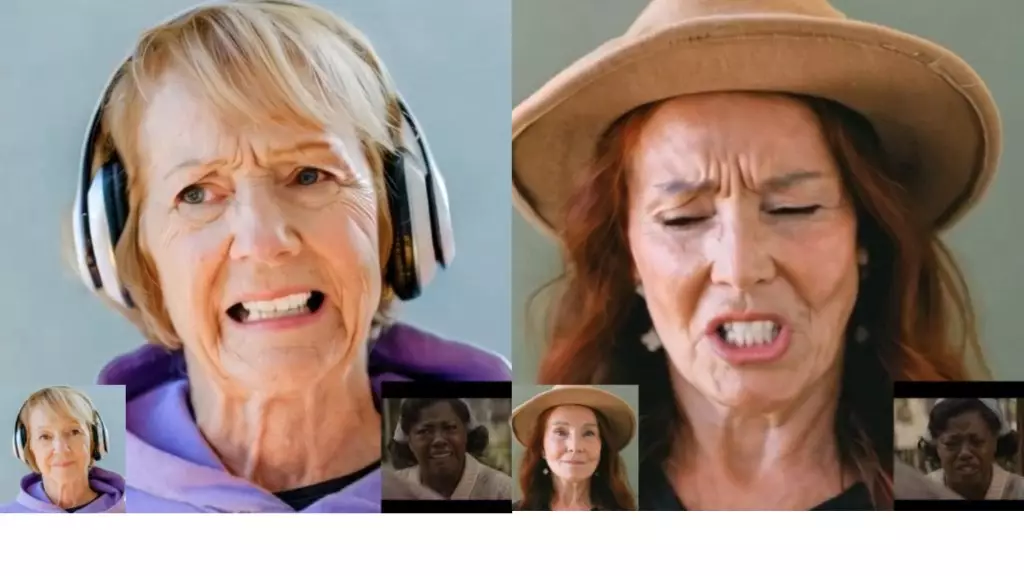In a significant leap forward for artificial intelligence, ByteDance has introduced its latest innovation, the X-Portrait 2 system. This technology stands poised to revolutionize the way we perceive still images by converting them into dynamic video portrayals that exhibit intricate emotional ranges and expressions, often indistinguishable from genuine human performances. As the parent company of TikTok, ByteDance has harnessed its colossal database of user-generated content to create a solution that not only dazzles but also sparks critical discussions around authenticity in the era of digital misinformation.
The X-Portrait 2 system accomplishes an ambitious feat: it animates static photographs with the emotional depth characteristic of real-life performances. From the desperate terror felt in “The Shining” to the complex emotional exchanges seen in “Fences,” the technology allows images to resonate on deeper emotional levels. Unlike prior attempts at photo-to-video transformation, which often yielded a robotic and lifeless output, this new system captures the subtleties of human expression. One may pause to contemplate the implications of such technology on our understanding of both art and reality.
The engineering marvel that is X-Portrait 2 incorporates novel techniques that transcend the simplistic methods prevalent in earlier AI applications. Instead of employing the conventional dot-point tracking used widely in animation, this system observes comprehensive facial movements, emulating the fluid dynamics of human expression. Consequently, this level of detail allows for the portrayal of emotions across various contexts—be it rapid speech or diverse viewing angles. This advancement is pivotal as it further breaks down the barriers between human actors and machine-generated performances.
ByteDance’s strategic advantage lies in its unmatched access to a mammoth trove of video content on TikTok. The platform generates over a billion videos each day, providing a vast reservoir of real-world facial expressions and nuanced movements across varied demographics. This vast dataset enables ByteDance to train its AI algorithms with unparalleled accuracy and nuance, making its offerings stand out in an increasingly competitive market. As various tech giants rush to develop their own AI systems, it is ByteDance’s commitment to understanding human emotional dynamics that distinguishes it from the rest.
As ByteDance positions itself as a frontrunner in AI development beyond its Chinese borders, the establishment of research hubs in locations such as Europe and Malaysia marks a strategic expansion aimed at cultivating global expertise. This ambitious initiative unfolds during a period of heightened regulatory scrutiny. Despite challenges and restrictions in Western markets—like recent operations orders in Canada and heated discussions surrounding TikTok’s future in the U.S.—ByteDance is forging ahead, reaffirming its commitment to innovation.
This impending shift in AI technology within the animation industry raises pertinent questions about the future labor landscape. Animation studios traditionally invest millions in motion capture technologies and employ vast numbers of animators. With X-Portrait 2, a single operator could potentially replicate intricate animations with relative ease, signaling a paradigm shift that would dramatically alter workforce dynamics. However, the potential redundancy of artistic roles instigates discussions about the value of human creativity compared to machine-generated output.
Despite the sheer technical prowess of ByteDance’s innovation, concerns loom regarding the ethical ramifications of AI-generated content. X-Portrait 2 could easily be misused to fabricate misleading representations, reshaping narratives in ways that traditional media cannot replicate. This reality heightens the demand for regulatory frameworks that ensure responsible use of such technologies, especially in politically sensitive climates. While competing companies rush to publicly share their algorithms, ByteDance’s decision to maintain the proprietary nature of its creation reflects a careful consideration of its potential for misuse.
As we explore the future consequences of advances like X-Portrait 2, the emphasis on human movement and emotional expression becomes increasingly significant. In a world where interactions are moving into virtual spaces, the capabilities to accurately convey human emotions could redefine how we engage in everything from business meetings to online storytelling. As individuals worldwide navigate an era where feelings and authenticity matter more than ever, technologies like X-Portrait 2 promise to play a pivotal role in shaping the fabric of our digital communications.
ByteDance’s X-Portrait 2 not only advances the field of AI animation but also invites us to reflect on our relationship with technology. As the boundaries of reality blur, we must consider the ethical and social implications, ensuring that innovation aligns with humanity’s best interests while acknowledging that such advancements alter our interactions in profoundly transformative ways.


Leave a Reply